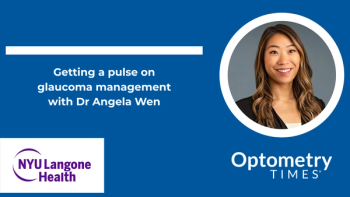
AAOpt 2024: Shooting your shot with scleral lens fittings
Jamie Kuzniar, OD, FAAO, FSLS, gives a rundown of what successful scleral lens fittings entail.
Optometry Times sat down with Jamie Kuzniar, OD, FAAO, FSLS, of Elevate Eyecare and Eyewear, to chat with her about her presentations at the recent American Academy of Optometry (AAO) meeting. One of Kuzniar's presentations focused on the fundamentals of fitting and troubleshooting scleral lenses, which she co-presented with Erick Henderson, OD, FAAO. The goal of the presentation was to provide guidance for both new and experienced practitioners looking to incorporate scleral lenses into their practice. Kuzniar explains that the presentation covers a wide range of topics, from defining scleral lenses to addressing common challenges that arise during the fitting process. Some of the key issues discussed include difficulties with lens insertion and removal, lens fogging, fluctuating vision, redness, and lens wettability.
Kuzniar emphasizes the importance of understanding how a patient's specific eye condition and corneal shape can impact the fitting process. Factors such as corneal diameter, the presence of scarring or dry eye, and the patient's dexterity all need to be considered when selecting and fitting the appropriate scleral lens. To help practitioners build confidence and expertise in scleral lens fitting, Kuzniar recommends attending conferences, participating in manufacturer-led webinars and workshops, and gaining hands-on experience through wet labs. She also highlights the benefits of offering scleral lenses in a practice, including improved patient loyalty, better reimbursements, and the ability to differentiate oneself from online competitors. Kuzniar stresses that a genuine passion for scleral lens fitting is essential, as the process can be challenging. However, she emphasizes the immense reward in helping patients achieve significant improvements in their vision and quality of life, which can make the effort worthwhile.
Newsletter
Want more insights like this? Subscribe to Optometry Times and get clinical pearls and practice tips delivered straight to your inbox.




















































.png)


